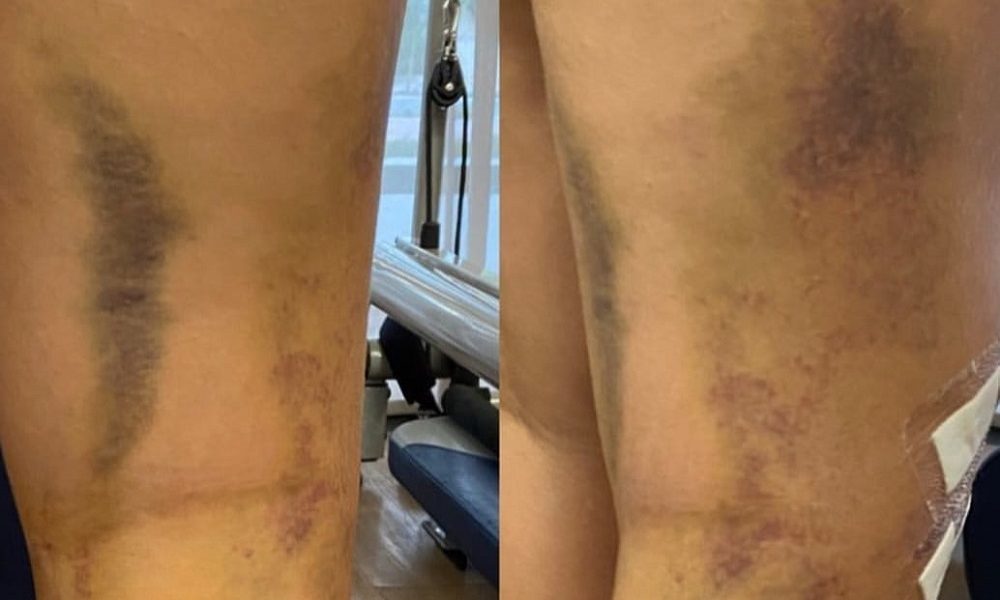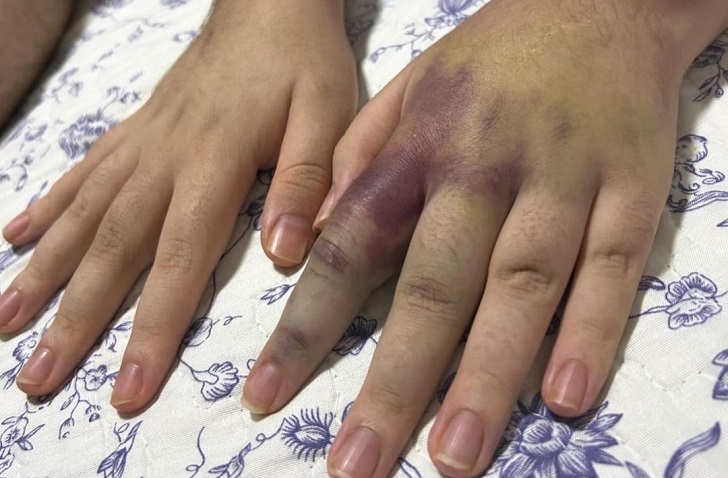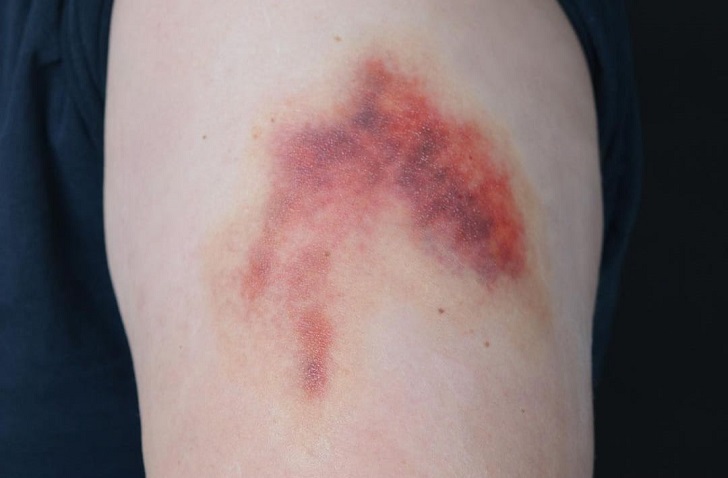
Hematoma vs Bruise: What Is the Difference?

When it comes to injuries, hematoma vs bruise are often used interchangeably, but they refer to different medical conditions. Understanding the distinctions between a hematoma and a bruise can help manage them effectively and recognize when medical attention is needed. This article will explore the key differences between these two types of injuries.
What Is Hematoma?
A hematoma is essentially a collection of blood outside a blood vessel. This condition arises following significant blood leakage, which can be due to various causes such as severe injuries, aneurysms, or complications from surgical procedures. Hematomas can appear in different areas of the body, including the brain (subdural or epidural), liver (hepatic), and even under the skin (subdermal) or nails (subungual).

@convivedocomahemofilia | MSN | Hematoma arises following significant blood leakage, which can be due to various causes such as severe injuries, aneurysms, or complications from surgical procedures.
The symptoms of a hematoma vary depending on its location. For instance, a subdural hematoma, located just beneath the outer protective covering of the brain, can cause severe symptoms like confusion, drowsiness, and even coma, necessitating urgent medical intervention. In contrast, a superficial skin hematoma might present with pain, redness, and swelling, which are typically managed with the RICE method—rest, ice, compression, and elevation.
What Is a Bruise?
On the other hand, a bruise, or contusion, is caused by a minor injury to the tiny capillaries under the skin, leading to a leak of small amounts of blood. This results in a noticeable discoloration on the skin’s surface, ranging from red and blue to purple and black. Bruises are common after minor bumps or falls and usually heal on their own within about two weeks.
People on medications like blood thinners or those with certain medical conditions may bruise more easily. Even a slight bump can lead to significant skin discoloration for these individuals. The recommended treatment for a bruise includes the RICE protocol and possibly over-the-counter pain relief medications to alleviate discomfort.

@health | MSN | Bruise, or contusion, is caused by a minor injury to the tiny capillaries under the skin, leading to a leak of small amounts of blood.
Hematoma vs Bruise: How to Tell the Difference
While both hematomas and bruises result from blood leaking out of injured blood vessels, they do not look the same. Bruises are generally flat and cause skin discoloration without significant elevation or solid texture. They typically resolve without treatment other than comfort measures.

@outofkit | MSN | Bruises are generally flat and cause skin discoloration without significant elevation or solid texture.
In contrast, a hematoma is often a raised area that can feel spongy or firm to the touch due to the larger accumulation of blood. Depending on the severity, some hematomas may require surgical intervention, especially if they continue to grow or exert pressure on surrounding tissues, which is common with hematomas in the skull or other sensitive areas.
Are Hematomas and Blood Clots the Same Thing?
It’s important to note that hematomas and blood clots are distinct conditions. While both involve blood, a hematoma occurs when blood pools outside of a blood vessel, and a blood clot is a mass formed by platelets and fibrin within a vessel to stop bleeding. Blood clots are necessary for healing, but when they occur inappropriately within blood vessels, they can lead to serious health risks like strokes or heart attacks.
Diagnosing and Treating Hematomas and Bruises
Identifying whether an injury has resulted in a bruise or a hematoma is crucial, especially in cases of severe impact or when symptoms do not improve. Imaging studies such as CT scans or MRIs are essential for hematomas, especially those suspected in the skull or deep tissues, to ascertain their extent and to guide treatment, which may include draining the hematoma.
On the other hand, bruises are usually diagnosed based on physical appearance and medical history. They do not typically require extensive investigation unless they are recurrent or appear without a clear cause, which could indicate an underlying clotting disorder.
More in Medical Conditions
-
Is It Safe to Travel to Paris? Essential Tips for Tourists
When considering a trip to Paris, one of the first questions that often arises is, “Is it safe to travel to...
June 20, 2024 -
What Is Unipolar Depression? Here’s What You Need to Know Right Now
Depression casts a long shadow over many lives, with symptoms that affect everything from our energy levels to our ability to...
June 7, 2024 -
A Comprehensive Guide on How to Heal Anxious Attachment Style
If you often find yourself seeking constant reassurance from your partner or requiring endless validation to feel secure, you may be...
June 1, 2024 -
Why Is My Skin Peeling on My Face After Skincare? Here’s What You Need to Know
Experiencing skin peeling on your face after implementing a skincare routine can be perplexing and frustrating. This phenomenon, where the skin...
May 23, 2024 -
What Is a Mental Edge, and How Do You Get It?
Have you ever wondered why some individuals seem unshakably confident under intense pressure, finding a way to excel when it matters...
May 15, 2024 -
When to Worry About Varicose Veins? Here’s What You Need to Know
Varicose veins are a common issue, affecting about 20% of adults. They’re usually seen as unsightly blemishes on the legs but...
May 12, 2024 -
Why Is Discipline Important: The Ultimate Guide to the Importance of Discipline
Discipline is undoubtedly one of life’s most crucial character traits. It shapes how we approach tasks, manage our time, and...
May 3, 2024 -
Have I Fallen Out of Love or Am I Depressed? Everything You Need to Know
Have I fallen out of love or am I depressed? You’re not alone in this query. In the diversity of human...
April 26, 2024 -
What Does Lung Cancer Breath Smell Like?
Cancer is one of the most formidable diseases of our time, characterized by the uncontrolled growth of cells that invade and...
April 20, 2024















You must be logged in to post a comment Login